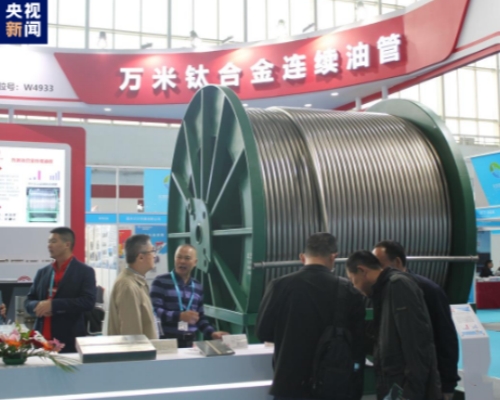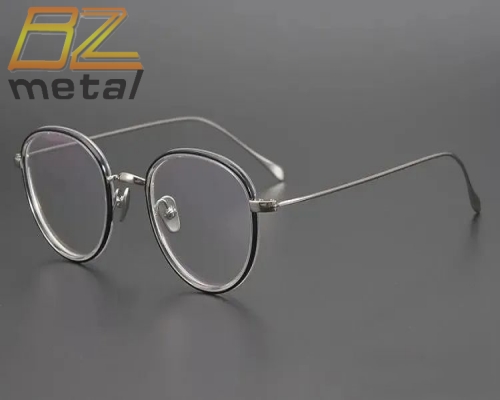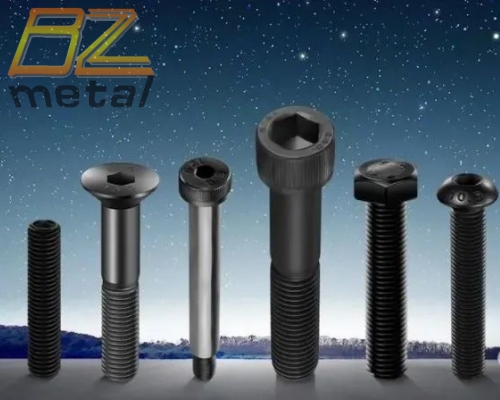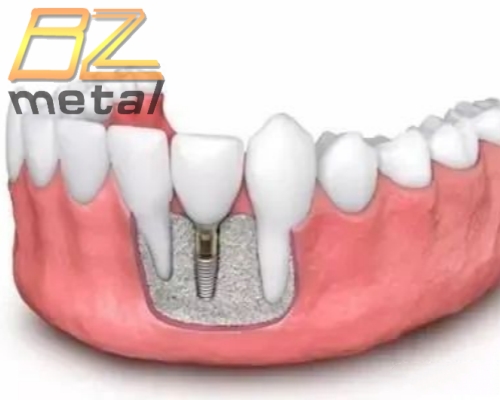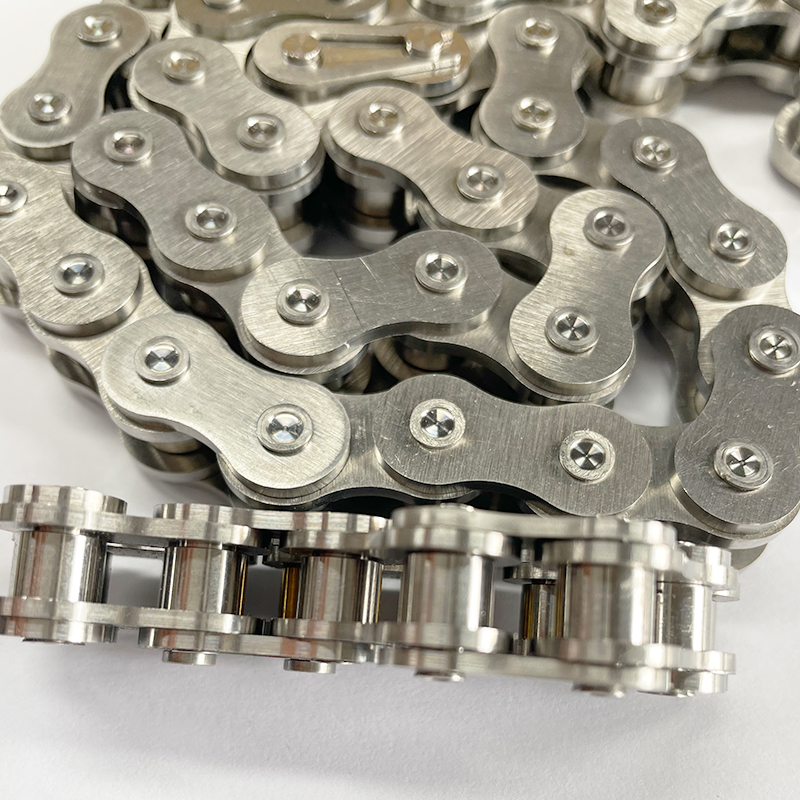Development and Application of Titanium Alloy Materials For Fasteners
Development and Application of Titanium Alloy Materials For Fasteners
1. The Development and Application of Titanium Alloy for Foreign Fasteners
The main bolts used in fasteners are mainly bolts. Titanium alloy bolts require shear strength and tensile strength to reach the level of high-strength steel 30CrMnSiA. The first use of titanium alloy fasteners dates back to the 1950s, when the United States first used Ti-6Al-4V(Ti-6-4) bolts on B-52 bombers, achieving significant weight loss effects. Ti-6-4 has a β stability coefficient of 0.27, low density, good strength and fatigue performance, simple alloy composition, and low cost of semi-finished products, so it has been widely used and developed. In 1955, 1 million Ti-6-4 titanium alloy bolts were used, and in 1958 it reached 20 million, and gradually became the main fastener material used in the aerospace sector in the United States and Western European countries. However, the cold plasticity of Ti-64 is very poor, its fastener forming can only be hot upsetting, and special equipment such as vacuum solid solution (water cooling) and aging is still required, and production costs are increased. At the same time, due to its poor hardenability and inability to guarantee the consistency of performance under large cross-sections, etc., the size of the bolts produced is limited, generally not more than φ 19mm. Subsequently, the United States began to use Ti-3Al-8V-6Cr-4Mo-4Zr (β-C) for the preparation of fasteners, whose strength level reached 1150MPa, and because of its good hardenability, large-size fasteners of φ 38mm can be produced.
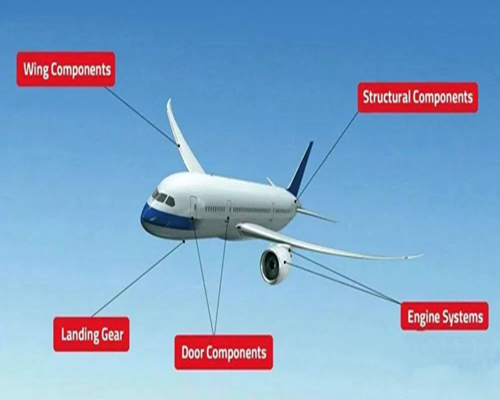
Russian fasteners mainly use BT16(Ti-3Al-5Mo-4.5V), which is an α+β high-strength titanium alloy with a strength level of 1030MPa. The main semi-finished products are hot-rolled bars and cold heading polished rods and wires. It is mainly used in the manufacture of fasteners, such as bolts, screws, nuts and rivets, with a max operating temperature of 350℃. The strength of BT16 titanium alloy in the solid solution aging state is slightly lower than that of Ti-6-4 alloy. The main advantage is that it can be cold formed in the annealing state, which significantly improves production efficiency. Therefore, BT16 fasteners manufactured by cold deformation have been widely used in Russia's machinery manufacturing industry and have become the main standard part material used in the Russian aerospace sector.
With the promotion of advanced civil airliners such as the A380, European and American countries have begun to study high-strength fasteners that can replace high-temperature alloys such as Inconel 718, A286 and MP35N. Alternative alloys include titanium alloys such as β-LCB, Ti-153, β21S and Ti-3553, but there are no reports of their actual application in fasteners.
| Item | Alloy | Composition | Diameter (mm) | Condition | Tensile Strength (MPa) | Enlongation (%) | Shearing Strength (MPa) | Upsetting Then |
| 1 | TC4 | Ti-6Al-4V | ≤51 | M | 930 | 10 | 656 | - |
| 4.0-14.0 | STA | 1100 | 10 | 660 | - | |||
| 2 | BT16 | Ti-3Al-5Mo-4.5V | 4.0-8.5 | M | 815 | 14 | 620 | 1 : 4 |
| 8 ~ 20 | STA | 1030 | 12 | 650 | - | |||
| 3 | TB2 | Ti-5Mo-5V-8Cr-3Al | 2.5 ~ 10.0 | ST | 885 | 20 | 640 | 1 : 3 |
| STA | 1100 | 12 | 700 | - | ||||
| 4 | TB3 | Ti-10Mo-8V-10Fe-3.5Al | 2.5 ~ 10.0 | ST | 840 | 15 | 650 | 1 : 3 |
| STA | 1100 | 10 | 690 | - | ||||
| 5 | TB5 | Ti-15V-3Cr-3Sn-3Al | 2.5 ~ 6.5 | ST | 705 | 15 | 550 | 1 : 3 |
| STA | 1110 | 10 | 680 | - | ||||
| 6 | TB8 | Ti-15Mo-3Al-2.7Nb-0.2Si | 4.0 ~ 16.0 | ST | 825 | 12 | - | 1 : 3 |
| STA | 1250 | 8 | - | - |
2. The Development and Application of Titanium Alloy for Domestic Fasteners
The development of titanium alloy fasteners in China started late. In the mid-1960s, Chengdu Aircraft Design Research Institute began to study TB2 titanium alloy rivets for titanium alloy aircraft fuselage, and completed the technical identification of related work in the late 1970s. By the late 1980s, the research on TC4 titanium alloy fastener hot upsetting technology was gradually carried out. At the same time, in order to overcome the difficulty of forming the TC4 alloy head, with reference to foreign bimetallic titanium alloy rivets, Ti-45Nb rivets with better plasticity were developed and the Ti-45Nb rivets were connected to the TC4 willow nail rod through friction welding. In order to keep up with the development trend of international advanced aerospace fasteners, China has also imitated a series of titanium alloys for fasteners, such as TC6 (Ti-6Al-2.5 Mo-1.5Cr-0.5Fe-0.3Si) martensitic α/β two-phase titanium alloy imitated according to the former Soviet Union BT3-1 alloy, TC16 (Ti-3Al-5Mo-4.5V) titanium alloy imitated BT16, TB3 alloy developed with reference to the United States Ti-8Mo-8V-2Fe-3Al alloy, etc. However, the quality of titanium alloy fasteners produced in China is not stable, and most of them are still dependent on imports. Not only are the prices more expensive, but also often due to the lack of procurement and supply, the development or production is in a state of “shutdown and waiting for nails”. Therefore, the amount of titanium alloy fasteners independently developed in China is very small in advanced warplanes.
In terms of high-strength fasteners, the fasteners of China's active warplanes use imported high-strength steel 30CrMnSiA. In recent years, imported Ti-6-4 titanium alloy wire rods have been gradually adopted to manufacture 1100MPa fasteners,and TC16 and TB8 titanium alloy fasteners have also been adopted one after another and have played a good weight reduction effect. Among them, TB8 (β21S, Ti-15Mo-3Al-2.7Nb-0.2Si) titanium alloy is a metastable β-type titanium alloy developed by the United States Timet Company in 1989 for the needs of the United States National aerospace shuttle program NASP against oxidized metals and composite substrates. It not only has similar creep resistance to Ti-6-4 alloy, 100 times higher oxidation resistance than Ti-153 alloy and excellent corrosion resistance, but also has similar cold deformation to industrial pure titanium like Ti-153 alloy. It is very easy to process into plates, strips, foils, wire bars, etc., and is one of the ideal titanium alloy materials for the manufacture of 1250MPa fasteners. However, it is worth noting that TB8 titanium alloy contains 15% (mass fraction) of Mo elements, which can easily lead to component segregation, and the production of large-scale ingots (>1ton) is difficult, limiting large-scale production and further promotion and application.
| Item No. | Technological Process | Tensile Strength (MPa) | Yield Strength (MPa) | Enlongation (%) | Reduction of Area (%) |
| 1 | Rolling Condition, PAM | 985 | 950 | 28 | 46 |
| 2 | Direct Ageing. 496℃/2h/AC, PAM | 1555 | 1410 | 9 | 10 |
| 3 | STA, 760℃/30min/AC+496℃ /24h, PAM | 1212 | 1105 | 12 | 16 |
| 4 | STA, 815℃/1h/AC+496℃ /20h, VAR | 1325 | 1185 | 11 | 38 |
| 5 | STA, AMS 4958 | >1240 | - | >8 | - |
3. Performance Comparison of Titanium Alloy for Fasteners
Table 1 lists the properties of several commonly used titanium alloys for fasteners. TC4, BT16, TB2, TB3, TB5 and other titanium alloy fasteners are designed to replace aluminum alloy and alloy steel fasteners, the strength level is above 1000MPa; TB8 alloy fasteners have gradually replaced high-strength steel and TC4 fasteners, the strength level is above 1250MPa.
As a high-strength titanium alloy for fasteners currently used more, Beta-C has successfully entered commercial application and has been applied in large-size fasteners of φ 38mm. The main reason is that the alloy has good hardenability and cold forming ability. In addition, the regulation of the microstructure properties of the alloy by the heat treatment process has also been fully studied, and the results are shown in above Table. As can be seen, the heat treatment process has a large impact on the mechanical properties of titanium alloy. The tensile strength of Beta-C alloy can be adjusted in the range of 1200~1550MPa. Correspondingly, the elongation range is 9%~12%.

